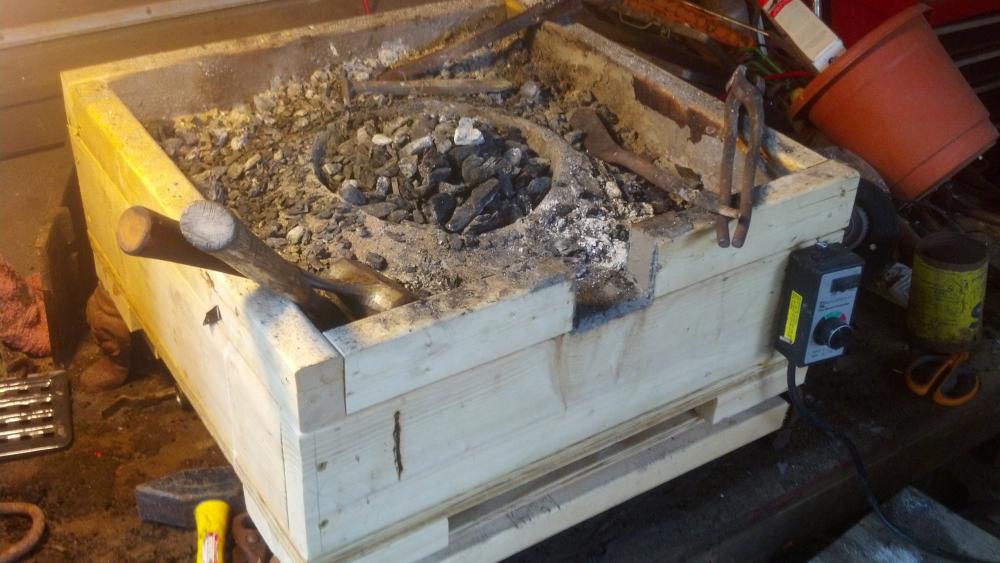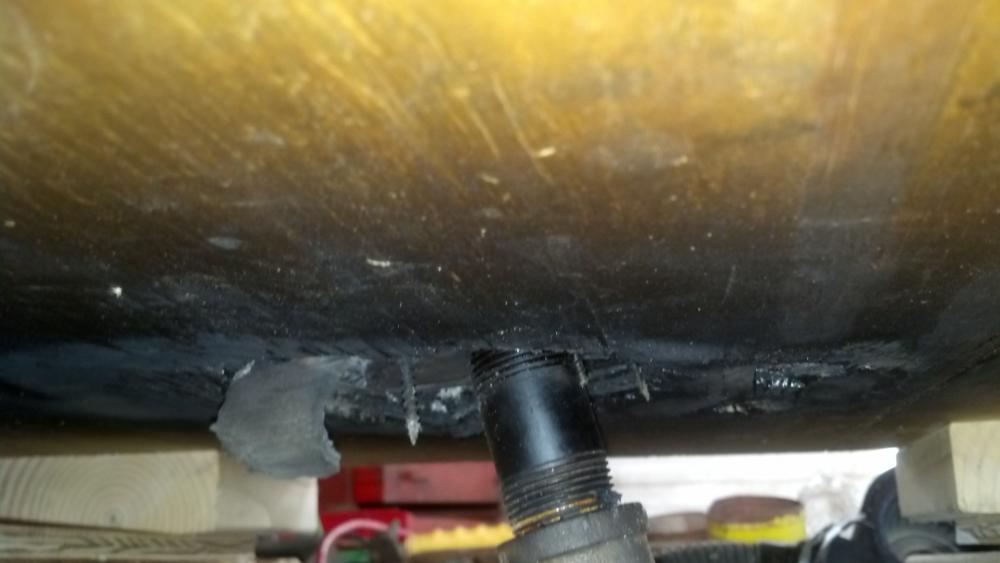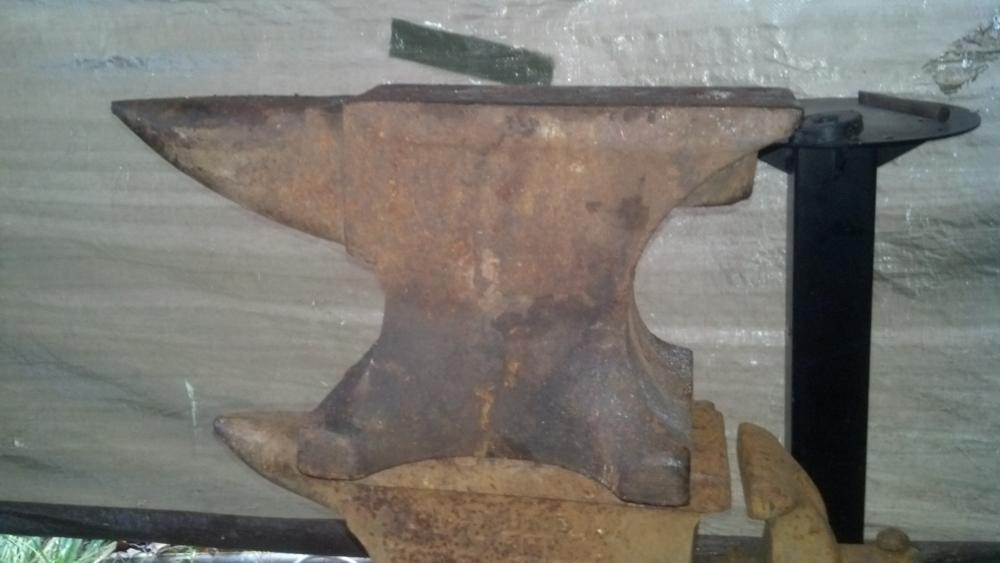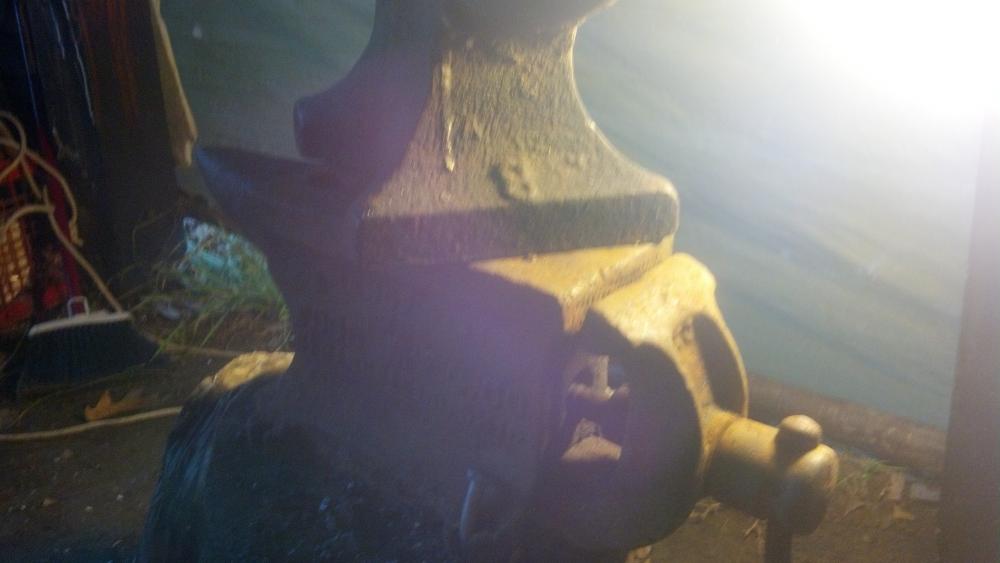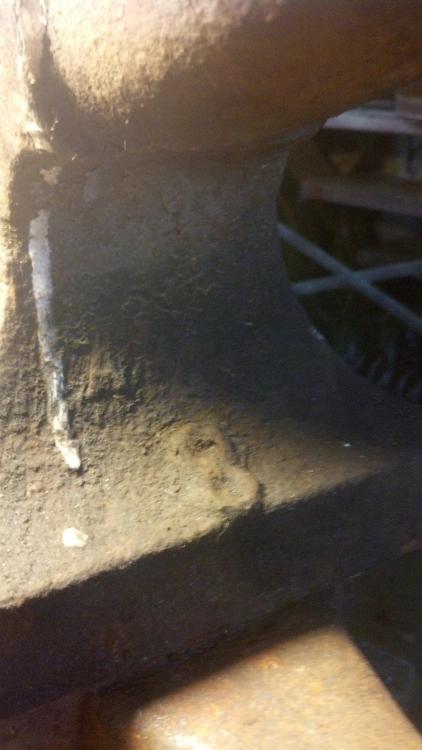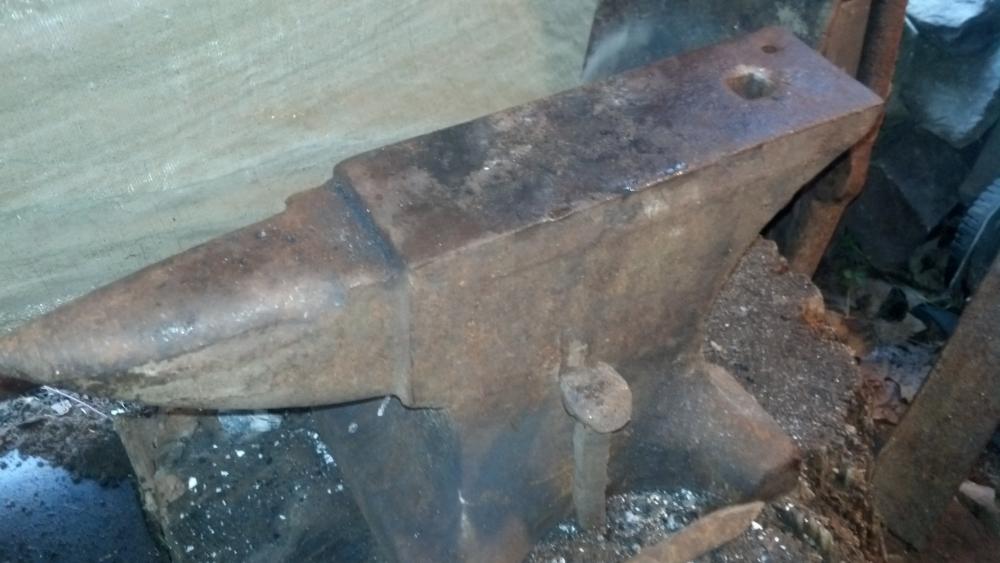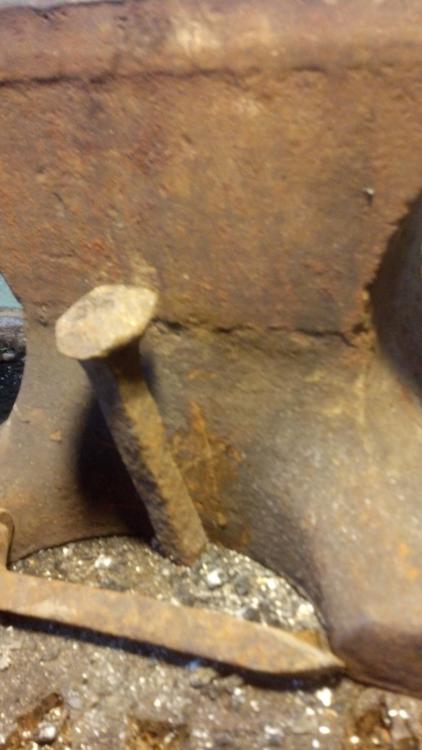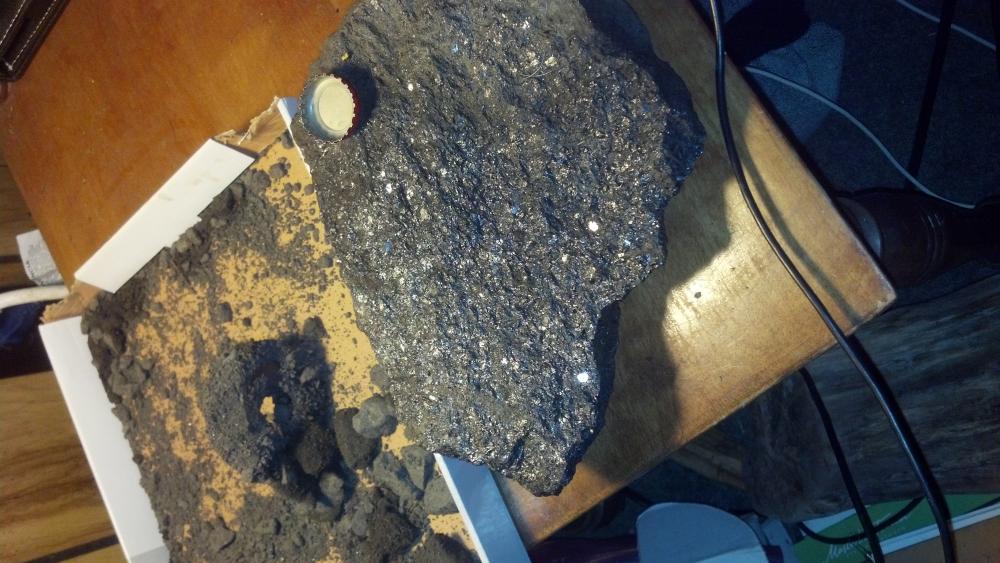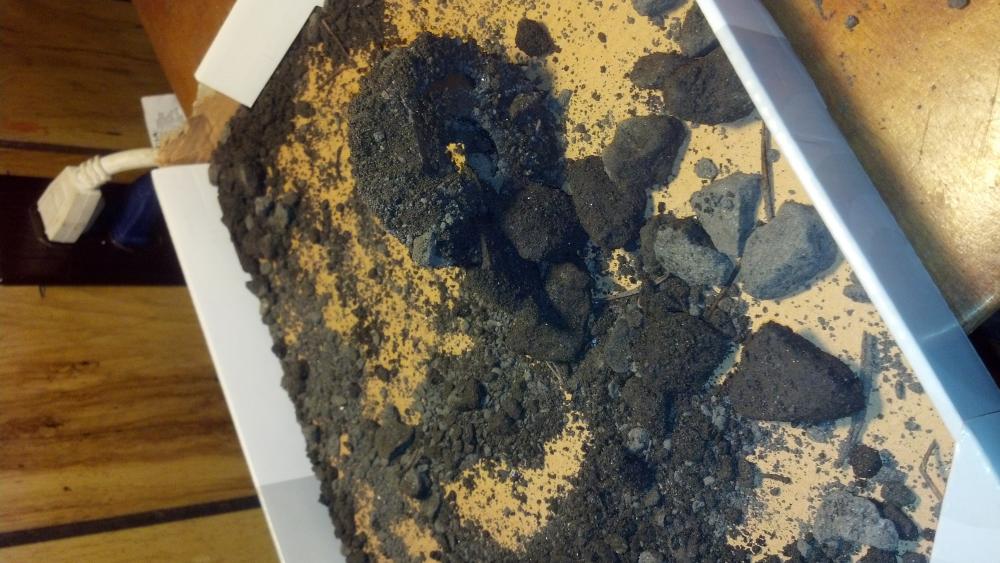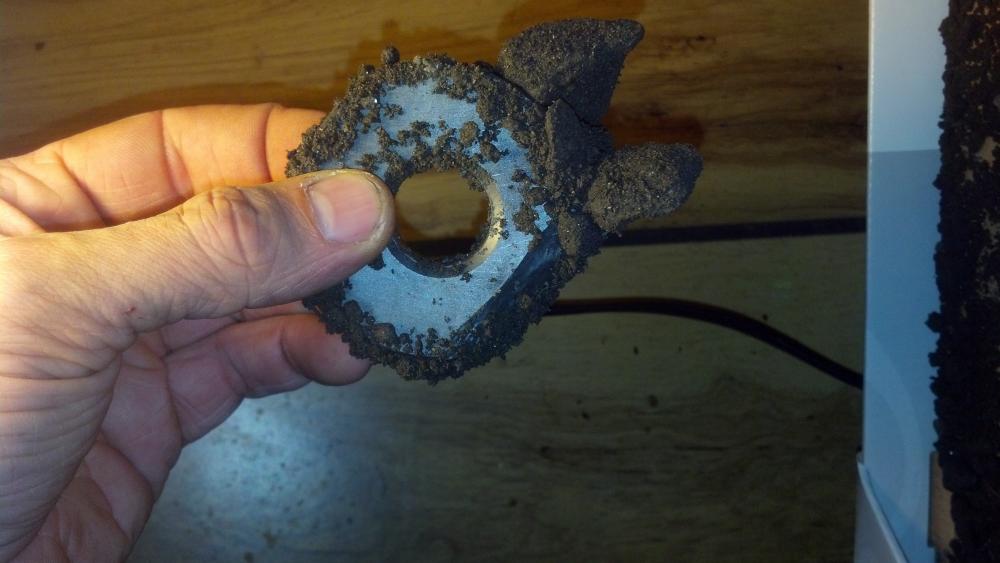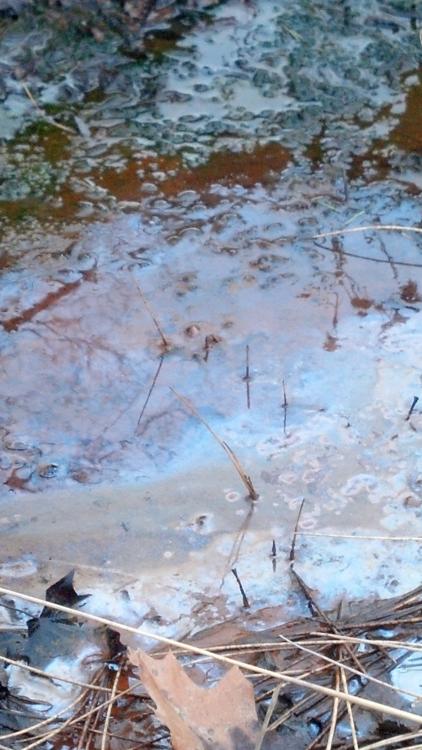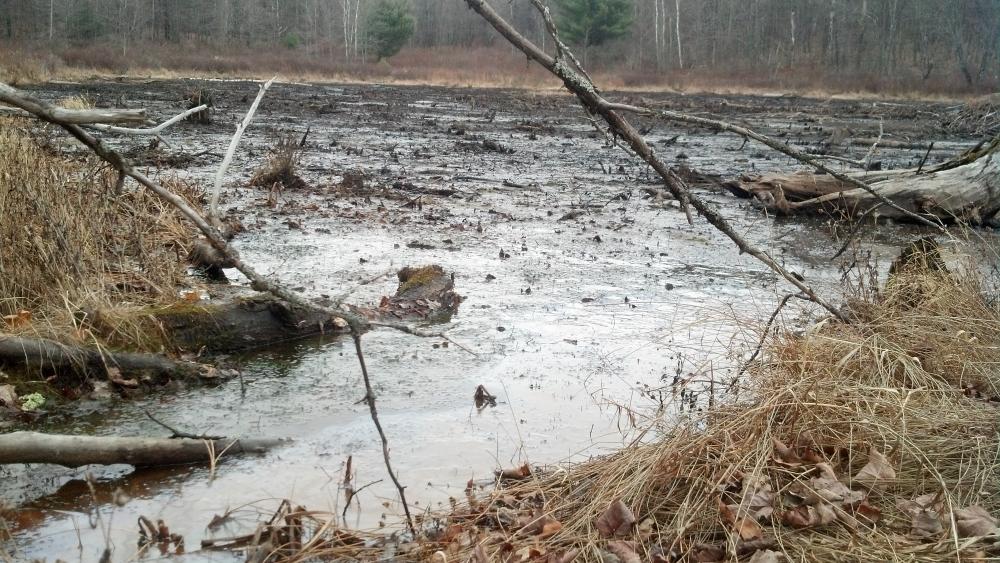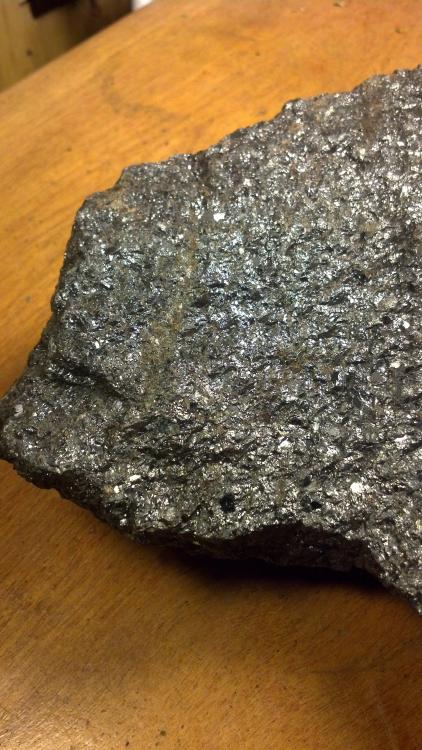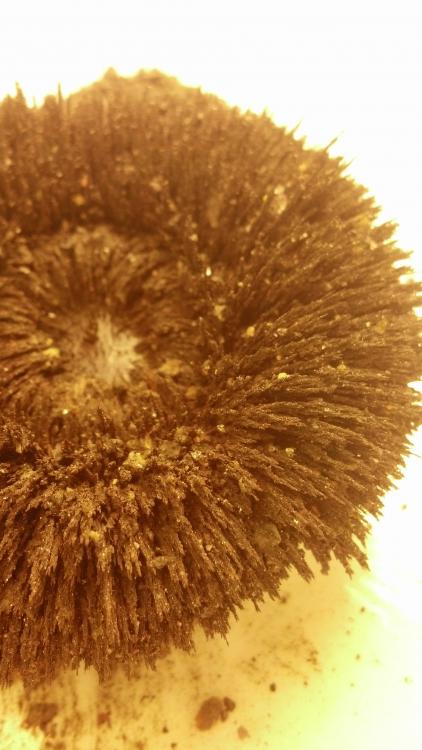
TimeToWaste
Members-
Posts
46 -
Joined
-
Last visited
Content Type
Profiles
Forums
Articles
Gallery
Downloads
Events
Everything posted by TimeToWaste
-
Small batches of magnetite ore?
TimeToWaste replied to TimeToWaste's topic in Smelting, Melting, Foundry, and Casting
Thanks for the information, I was looking along those same lines after suggestions by members, bloomeries were apparently everywhere, large and small. I'm quite a bit closer to the Adks than the Owsego area, lots of bogs out this way too, just waiting for spring now. -
Questions on ground forge design, materials.
TimeToWaste replied to TimeToWaste's topic in Solid Fuel Forges
Tried it my way, didn't turn out so good, going to take a stab at it your way, hopefully be forging in a couple of days. -
Questions on ground forge design, materials.
TimeToWaste replied to TimeToWaste's topic in Solid Fuel Forges
House of D, thank you for the response and the resource, its difficult to find reliable info online. Charles, you've saved me a lot of head scratching and frustration. Thank you. I am going to follow your suggestions(as well as Frosty) and find a bag of cat litter, some sand and quit making things more complicated than a hole in the ground. Me, try to re-invent the wheel? Never heard of such a thing... -
Questions on ground forge design, materials.
TimeToWaste replied to TimeToWaste's topic in Solid Fuel Forges
I really was over thinking. Its in my nature. Would have repeated the same problems and only solved the fire issue. Weeks or months of kicking myself avoided. The 55 forge seems simple and foolproof...avoids a couple irritating problems with brake drum forges. The hole in the ground was the first one I tried and all the bending over alone made it nearly impossible. Thanks again to All. Charles, thanks for clarification on clay. -
Questions on ground forge design, materials.
TimeToWaste replied to TimeToWaste's topic in Solid Fuel Forges
Thanks for taking time out of your holidays to respond. I had a feeling I was overdoing it, just didn't think by so much(I was moments from installing the spoiler and neon under lights). So quit the cement, it was easier to find than any type of clay here outside of expensive artist supply. I thought the cement would hold up till spring. The soil around here is mostly forest soil, gravel or hay/corn fields and the ground is also starting to freeze. If I'm forced to buy is there a specific clay to use? I read about some here on IFI but can't find the post again. I get it, it all just clicked. Need a big fire, build up and out with firebrick not oversized for the rare occasion, save fuel. Consumables get consumed, replace as needed, castable cement is for more permanent applications. Firebrick under firepot should prevent floor from burning. I was looking at the whole thing wrong. Is there an advantage to running the tuyere in horizontally? Could I build a smaller box because of the smaller firepot? It really does take a couple guys to move. Thanks again for the advice, and patience with another newb. Happy Holidays. -
Assistance identifying an anvil.
TimeToWaste replied to TimeToWaste's topic in Anvils, Swage Blocks, and Mandrels
My second guess was cast marks. That's the second opinion I've got that its a badger. Thanks for the response and info. Happy Holidays. -
First thing first, sorry for the long post and pile of questions. I appreciate everyones time and consideration. After disappointing results with brake drum forges I've taken the advice of some IFI members and have built a "prototype" charcoal ground forge. Poor design caused a fire on the floor of my 2'×2', 8" box. All in all it performed well but I need to fix it and would like to get it right this time. I've spent more time tinkering with forges than forging anything. I back filled the box with sand, formed the fire pot(about 5" deep,1' across) with a large kitchen bowl using(oh no, here it comes) the dreaded plaster (dangerous, ineffective, temporary, free) of paris/sand mix. Three heavy coats of 2700° stove type(non castable but available and very cheap) refractory cement on top of that. 1 1/4" floor flange heavily cemented to the 1/2" ply floor, bottom of pot about 2" above(all cement between).Fire started there. I thought cement would protect floor, with blower off tuyere got very hot then fire escalated. My questions are; Could I use cement board like dura rock to replace floor?(I plan on raising the pot a few inches) If not, what would work? Replace plaster mix with kastolite30, then coat with mizzou instead of cheap paste type? Any suggestions on kastolite thickness? Or...? Before the fire, the forge easily achieved welding temps, should I protect walls from flux (20mule borax) from what I gather it destroys liners and don't want to damage it right away as I'm trying to learn to weld and will be using a lot of flux. What is an appropriate backfill, vermiculite, clay...? Any suggestions on tuyere design to prevent future issues with heat? Sorry again for so many questions.Feedback would be greatly appreciated. Thanks again for your time and experience.
-
I was given this anvil and cannot find info online, it weighs about 70#, its only marking is a 8 under horn, 3/4" hardy. Visible welds between feet/body, body/face. Does not have much ring but does have decent rebound, I almost broke my nose when I missed a hammer strike(got snuck up on, startled mid swing). Mostly just curious, thanks for any help.
-
Do you think those politicians would feel the same if the mess was in their river frontage? Or their loved one tripped and hurt themselves on some rusty iron? Bet we would hear the battle cry from miles away," we must clean this river", oh well, it must be nice to be one of the privileged few who make those types of decisions for us.
-
Very nice work, I enjoy seeing "garbage" turned into something beautiful. I haven't been back to the site yet, the river must be freezing over by now anyway. I'm still on the fence but leaning toward just getting permission and doing it right. Don't want to get caught up in something over a pile of iron. Makes me wonder, would anyone have a problem if it was a rock or a piece of driftwood I was taking? Will anyone even notice when this material is swallowed by mud. Why is everything so regulated and controlled? I would happily clean as much of the area as possible, improve the health and scenery of the river, dispose of the waste and fully enjoy the byproduct of my(our) work(would've been done by now), all the while hurting no one or disturbing the ecology(as little as possible anyway) why do I need permission? Frustrating.
-
Small batches of magnetite ore?
TimeToWaste replied to TimeToWaste's topic in Smelting, Melting, Foundry, and Casting
Thanks. -
Small batches of magnetite ore?
TimeToWaste replied to TimeToWaste's topic in Smelting, Melting, Foundry, and Casting
I'm not on Facebook now but am trying to start an account to join your page, Facebook is giving me a hard time...can I message you on your profile when I get it squared away? -
Small batches of magnetite ore?
TimeToWaste replied to TimeToWaste's topic in Smelting, Melting, Foundry, and Casting
Thanks for the help everyone, it is much appreciated, you've answered a lot of questions that would've taken me forever to put together on my own. The Facebook page seems like a definite must. -
Small batches of magnetite ore?
TimeToWaste replied to TimeToWaste's topic in Smelting, Melting, Foundry, and Casting
Sorry, *First pic* Last pic is 12#+ ifI can break it up...i Thanks for the advice, it has been repeated enough times on this and many other posts that I can't help but heed it. Knowing me though, curiosity, tenacity and boredom will build a stack and a fire and leave me with nothing but more questions, hope I can find someone who actually knows what they are doing first. Thanks again. -
Small batches of magnetite ore?
TimeToWaste replied to TimeToWaste's topic in Smelting, Melting, Foundry, and Casting
Too big to smelt? As far as I've read it is but some of the less sophisticated smelt videos ive seen use MUCH lesser quality ore with "passable?" results(sorry for YouTube source reference). I collected 180#+/- and that was a pain I won't be able to do again until spring if at all, hoping to use all that I have. Thanks again for your time. Second pic is general proportion of particle size in the whole pile. Sorry, *First pic* -
Small batches of magnetite ore?
TimeToWaste replied to TimeToWaste's topic in Smelting, Melting, Foundry, and Casting
A question about roasting if I may? Should I roast magnetite to make it easier to pulverize, after screening out fines I'm left with a fair percentage of unsuitably large very magnetic pieces, they are harder than diamonds. I have a wood stove and a heavy cast iron pot, if it doesn't hurt the ore(and serves a purpose) it'd be as easy as putting the three together and providing forced air to reach roasting temps... -
Small batches of magnetite ore?
TimeToWaste replied to TimeToWaste's topic in Smelting, Melting, Foundry, and Casting
Thanks for the Facebook link, lots of ore, Smiths and woods around here , someone has to be into it close by. Lee Sauder is a great resource, I will research his ore quality testing methods. I'm going to call the mine rep and try to buy direct from the mine, they'd know its quality right?(3+hour drive)but will also check out Ric Furrer(drive to mailbox). Magnetite is what I've got to work with now but would like to have other ores to "experiment" with. Limonite mines not too far away(3+hour drive in different direction). Bog iron all over(theoretically). Ore is one thing,... furnace construction, operation, chemistry, its still a long haul, lots to learn. Thanks again. -
Small batches of magnetite ore?
TimeToWaste replied to TimeToWaste's topic in Smelting, Melting, Foundry, and Casting
I just laughed so hard i woke my wife. That is the greatest idea I've ever heard. Remember how Tom Sawyer got the neighborood kids to paint the fence? My luck they'd find someone... -
Small batches of magnetite ore?
TimeToWaste replied to TimeToWaste's topic in Smelting, Melting, Foundry, and Casting
I was thinking more like a shovel, bucket and about a gallon of soap. I read that sometimes the ore is found 3 or more feet down, that would be some serious barefoot digging. It occurs to me that people not accustomed to seeing a man wading up to his waist in beaver pond sludge holding a trenching shovel and a plastic paint bucket might think something was wrong... I should come up with a good response to questions, " I'm looking for my lost dog", or "I literally just woke up here, can I have a ride?", or "I'm looking for bog iron.", all will probably get a similar response. -
Small batches of magnetite ore?
TimeToWaste replied to TimeToWaste's topic in Smelting, Melting, Foundry, and Casting
-
Small batches of magnetite ore?
TimeToWaste replied to TimeToWaste's topic in Smelting, Melting, Foundry, and Casting
DanielC, thanks again. Going to study up on Japanese iron making. -
Small batches of magnetite ore?
TimeToWaste replied to TimeToWaste's topic in Smelting, Melting, Foundry, and Casting
Thomas, thanks for responding, that's what I was worried about, I may have to send some of the magnetite ore out for testing. I scavenged it just outside a magnetite/ilmenite mine and have read that the presence of Ti can complicate the process and unbeknownst to us confuse our results. Would hate to ruin our chances before we even started. I was also wondering if the black sand pic I posted looked like it was worth using as is, assuming its doesn't contain too much Ti. I collected 150+# of ore that is about 3/4 strongly magnetic and hope its usable(asking a lot from a pic only, I know). Thanks again for your time and experience. -
Small batches of magnetite ore?
TimeToWaste replied to TimeToWaste's topic in Smelting, Melting, Foundry, and Casting
I've never sent a sample out for testing, and was wondering, is it expensive? I would like to know what's in those rocks out of curiosity but kind of need to know with the sand so we dont waste our time or resources on something doomed to failure. Hopefully its not cost prohibitive. Thanks again. Was just looking and found limonite mines not too far from here, maybe worth my time to scratch around the woods out that way... -
Small batches of magnetite ore?
TimeToWaste replied to TimeToWaste's topic in Smelting, Melting, Foundry, and Casting
That's the most interesting thing I've seen all day. I did a bit more reading in reference to your comment about rocks but was left with one question...any easy to ascertain the % Fe in those rocks without an analysis? A rough guess even? A DIY type thing? Not planning on smelting with the rocks, unless its practical, just thought that piece was worth keeping, found a huge pile of mostly clean black sand to smelt. Thanks in advance for any responses, they are appreciated. -
Small batches of magnetite ore?
TimeToWaste replied to TimeToWaste's topic in Smelting, Melting, Foundry, and Casting
Magnetite, I think... It takes to a magnet and scratches the back of ceramic tile like graphite...very heavy.
